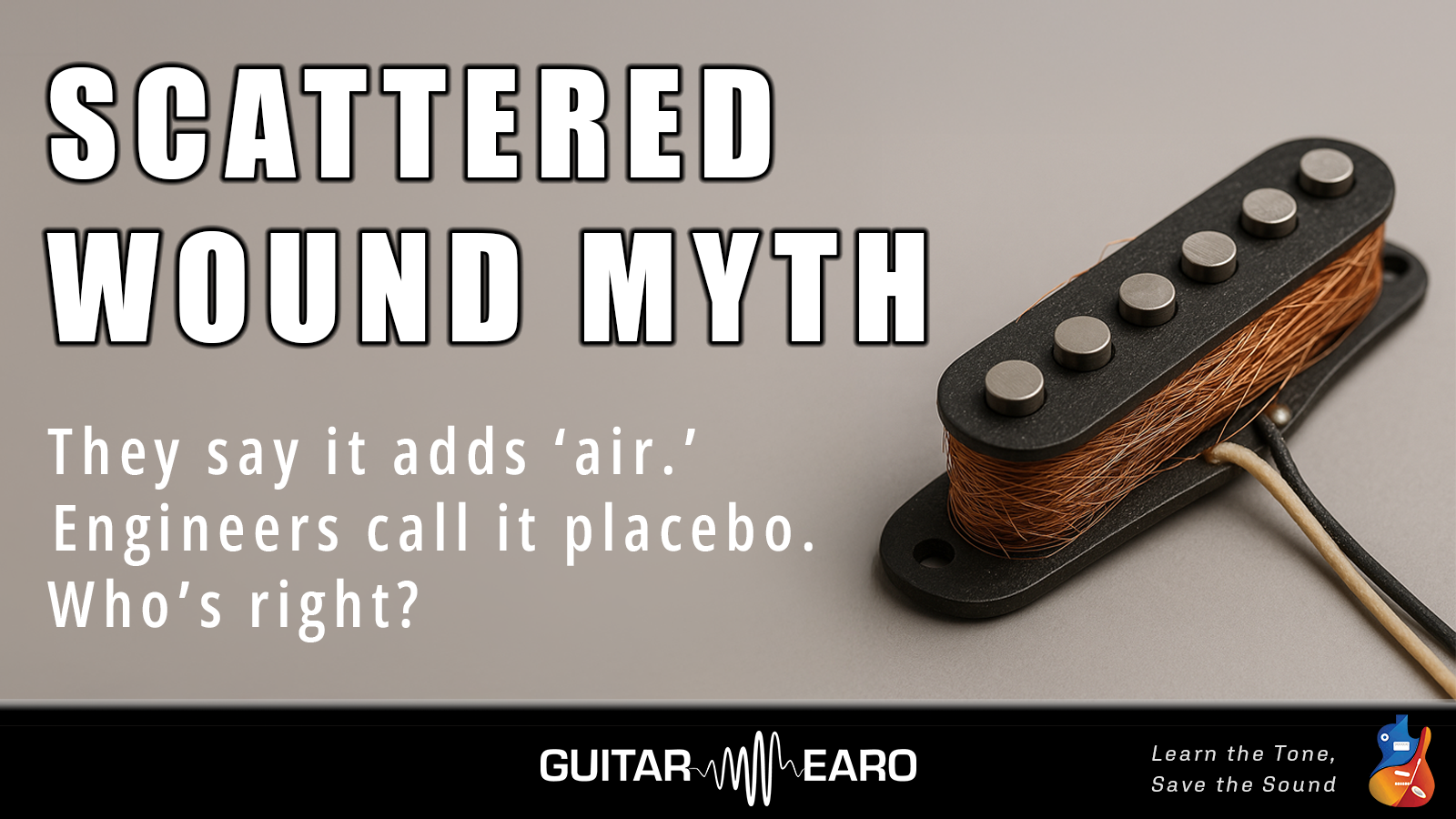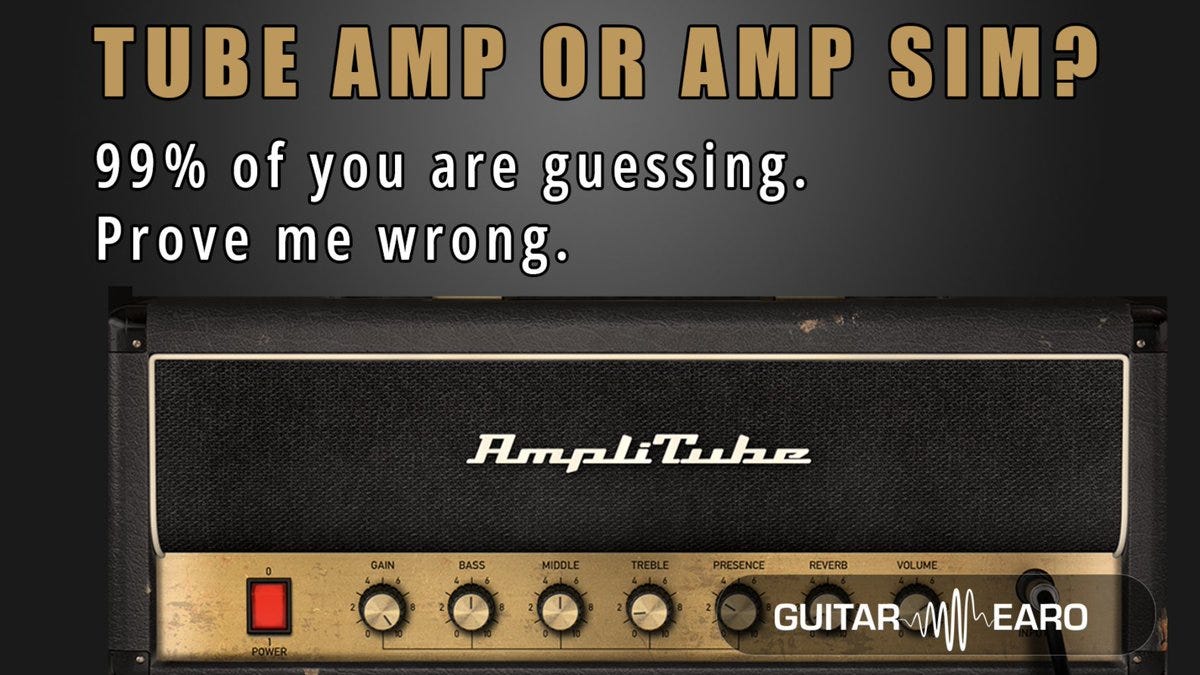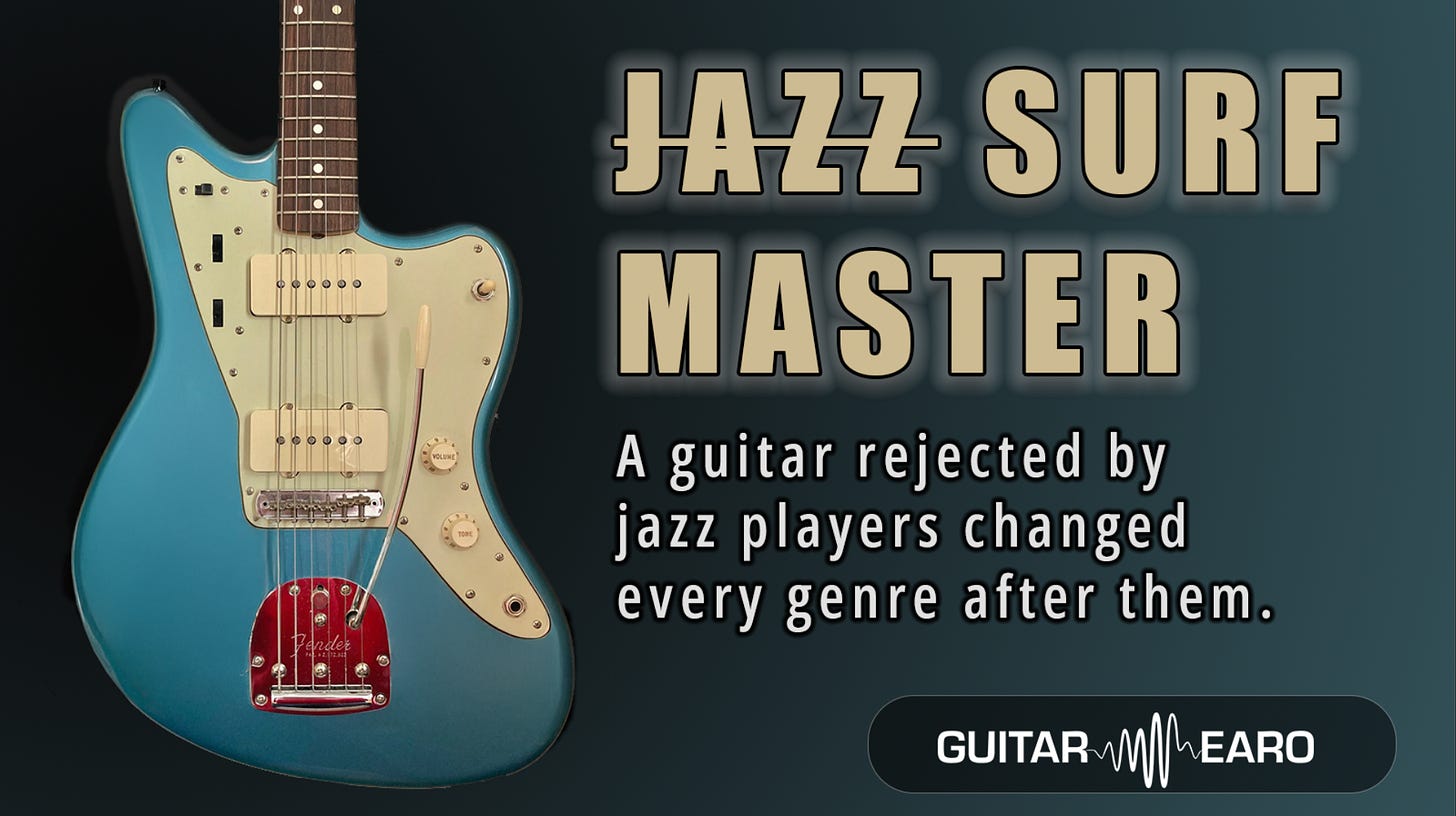Scatter-Wound Pickups: Perfection Through Imperfection?
Some call it craft. Some call it chaos.
But behind the debate lies a fascinating mix of physics and psychology.
Let’s pull the wire tight.
The Two Camps: Machine vs Scatter
Machine-wound pickup → neat, uniform wire layers.
Scatter-wound pickup → deliberately irregular, randomized winding.
That randomness isn’t just cosmetic—it lowers the pickup’s self-capacitance by about 10–15%.
And less capacitance means a higher resonant frequency.
What It Sounds Like
Here’s a practical example:
Machine-wound Strat coil: resonance peak ~6.5 kHz
Scatter-wound of same spec: resonance peak ~7.0 kHz
That half-kilohertz bump may not look huge on paper, but your ears hear it as:
A touch more treble “air”
A slightly broader resonance curve → more openness in the highs
Why People Argue About It
Boutique builders call scatter winding a craft—each pickup becomes unique.
Engineers argue specs are specs: if the inductance, resistance, and capacitance match, the tone must be the same.
So is scatter winding genuine character—or just chaos dressed up as mojo?
The Truth in the Middle
Blind tests often show the difference is small.
But here’s where it gets interesting: scatter winding introduces unit-to-unit variation.
One pickup might peak at 6.8 kHz. Another at 7.1 kHz.
Those subtle differences create a sense of individuality.
And individuality is the fuel for the “my pickup has magic” story.
Takeaway
Scatter-wound pickups:
Raise resonance slightly
Open up the treble
Ensure no two coils are identical
Whether that’s magic or marginal depends on your ears—and your expectations.
🎸 Learn the Tone, Save the Sound
If this kind of tone nerdery hits home, subscribe to Guitar Earo for daily deep dives straight to your inbox.




